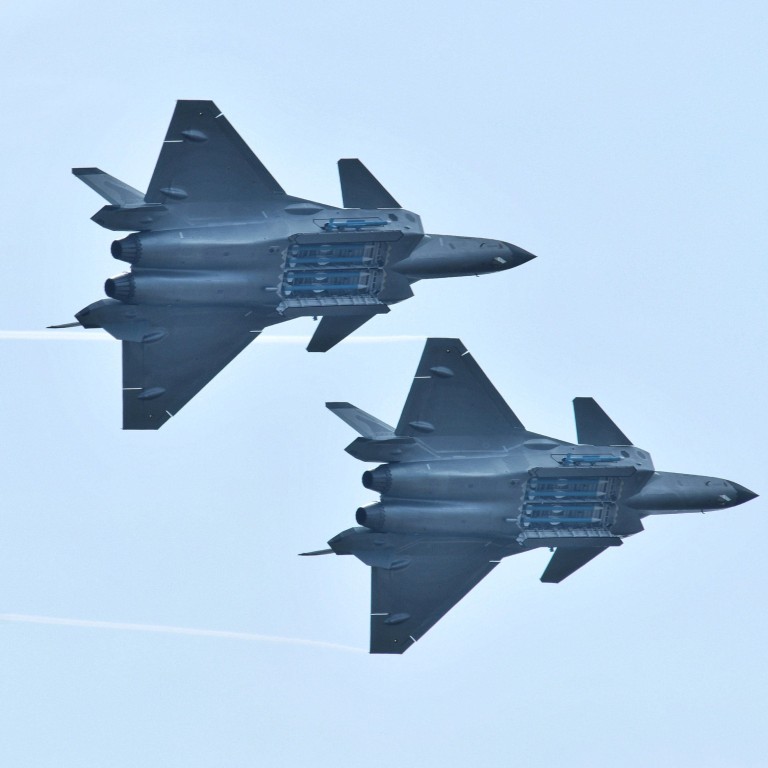
China’s J-20 ‘Mighty Dragon’ fighters set to get purpose-built engines ‘within next two years’
- The fifth-generation jets were designed to compete with US F-22s but have been using stopgap engines that limited their speed and combat capabilities
- China has spent two decades trying to master the technology behind the WS-15 engine, which a military source says is now almost ready to enter service
The WS-15 engine has been specially designed for the J-20 and is designed to improve its manoeuvrability and combat capabilities.
“The development of WS-15 is nearly complete … or may be finished within one or two years,” said the source, who requested anonymity due to the sensitivity of the topic.
The source added that the project had fallen behind schedule and had taken more than 10 years but the upgrade means “it will be on a par with the American Lockheed Martin F-22 Raptor”.
China ‘not afraid of falling behind’ on military technology: analyst
On Monday, Hong Kong-based Phoenix Television broadcast an interview with Li Gang, the pilot who made the J-2o’s maiden flight, in which he said the new engines would maximise the fifth-generation fighter’s capabilities.
At the time of the plane’s debut in 2011 – which was timed to coincide with a visit to Beijing by then-US defence secretary Robert Gates – it was fitted with Russian Saturn Al-31 engines.
These were designed for fourth-generation fighters, which meant the new fighter was less agile than the US planes it was supposed to compete with.
The American Raptors are fitted with engines that use two-dimensional thrust-vectoring nozzles – a technology China has been trying to master for two decades and which will be used in the new engines.
These nozzles allow the direction of the engine thrust to be controlled, which means the plane can perform sudden manoeuvres that conventional aircraft cannot – for example avoiding missiles.
China has made some progress in this field and in 2018 it unveiled the WS-10C Taihang engine, which offers greater manoeuvrability but less power than the WS-15.
But the WS-15 engine failed its final evaluation in 2019 and the WS-10C, first tested on a single-engine fighter, has been used as a stopgap for the twin-engined J-20.
The J-20 was designed to be a fifth-generation stealth fighter jet on par with Lockheed’s F-22 Raptor and F-35 Lightning multirole strike fighters.
China conducts aerial bombing drill after US-Japan statement on Taiwan
The fighters were rushed into service by the People’s Liberation Army in 2017 after the Pentagon started deploying its F-35s in the Asia-Pacific region.
The PLA currently has 50 J-20s in service and the military source said the Chengdu Aerospace Corporation (CAC) is expected to produce another 50 by the end of this year.
“But compared with the Lockheed Martin production line, which is able to deliver more than 100 F-35s every year, each of the CAC’s [four] production lines only has the capacity to make about one J-20 a month,” the source said.

